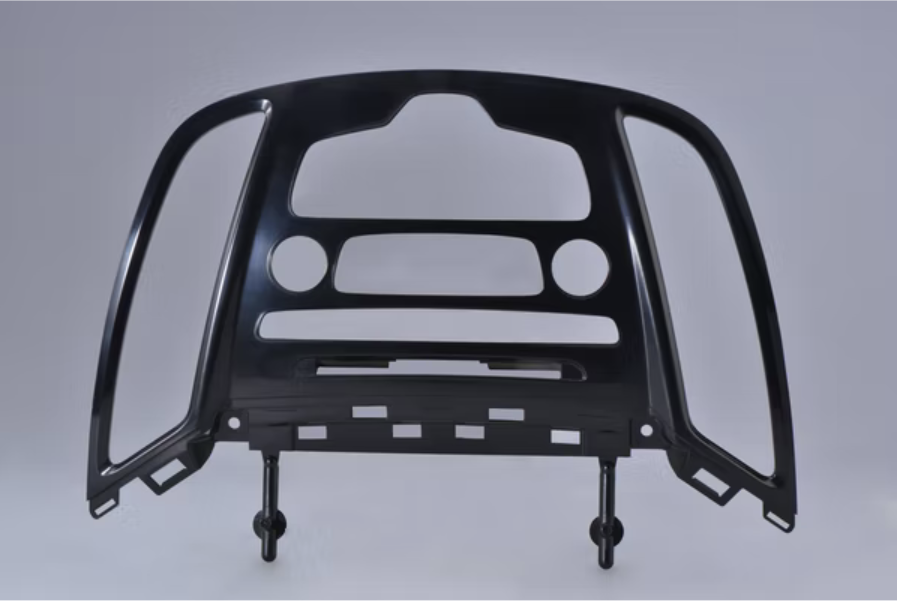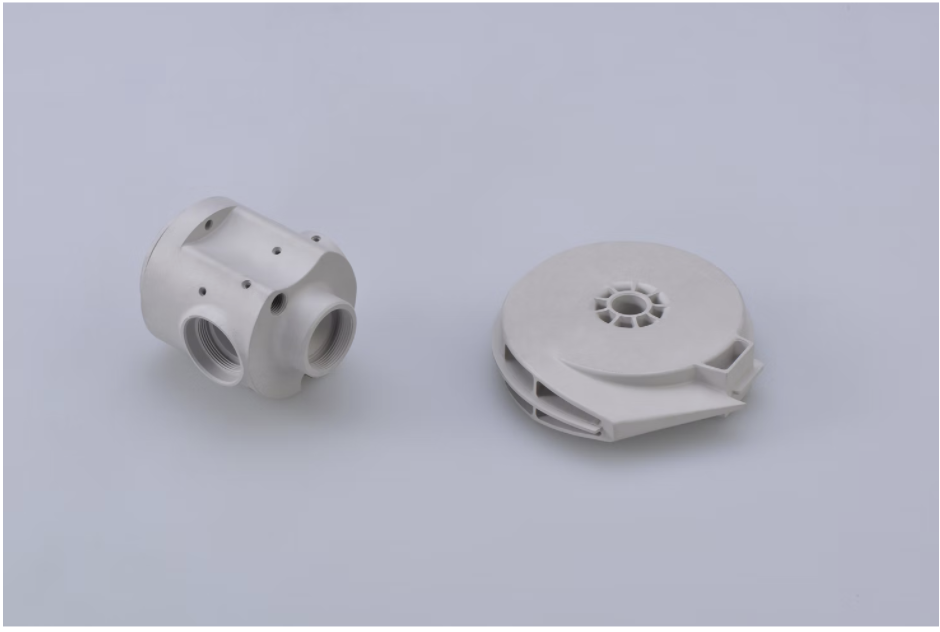Tech
Most Noteworthy Advantages to Using Plastic Injection Molding for the Manufacturing of Parts

Injection molding is a manufacturing process that involves the production of parts by injecting molten material into a mold. This production method is popularly used in mass-production processes where the same part is made thousands of times in succession. How is it done? The mold is customized during tooling, which gives the shape of the part. As a result, it can create numerous identical and dimensionally consistent pieces, even on parts with complex designs.
When used to mass fabricate plastic parts, the process is known as plastic injection molding. In this case, the process involves an injection of molten plastic material into the mold, which cools and solidifies to its final form. Plastic injection molding is ideal for manufacturing high volumes of plastic products, which serves many industries and individuals.
Parts and products produced with this method are, for example, bottle caps, automotive parts and components, toys, one-piece chairs and small tables, mechanical parts, and many other plastic products.
But let’s take a closer look at the advantages of this type of production.
#1 Ability to produce detailed and complex parts with high precision
Injection molding is excellent for manufacturing highly complex and detailed plastic parts in large volumes with nearly no deviation. That is because it easily integrates with computer-aided design. Hence, it relies on comprehensive data collection and analysis techniques at the center of scientific molding and the engineers trained in the process.
Furthermore, plastic injection molding allows you to incorporate more features at minimal tolerances than other methods. Injection molders can complete designs accurately to within +/- .001 inches. These measurements are possible and are also repeatable across production runs and equipment.
#2 Efficiency and speed
Injection molding has a high production output rate, is cost-effective, and fast, making it the most efficient form of molding. Cycle times during this process that can be as low as 10 seconds, combined with the high quality of molds, mean a lot of products within a limited time frame.
That implies that this method generates excellent profit margins. In addition, implementing techniques like greater upfront focus on design to minimize problems later on and incorporating value-added services to combine production process steps can streamline time and cost burdens.
#3 Strenght and stability
Today’s lightweight thermoplastics can resist even the harshest conditions, and for constructing complex injection-molded applications, there are many engineered materials to choose from. Furthermore, the plastic injection molding process uses filters to reduce the density of plastic that adds strength and stability to the molded part.
High-performance blends and hybrids can also be formulated to meet particular part requirements and characteristics. Naturally, a proper balance of design considerations and material selection, based on the set conditions for the end product, helps additionally address the need for strength and stability.

#4 High-output production and consistency
High-output production of complex plastic parts demands a consistent, repeatable process to achieve designs with tight tolerances. Injection molding can produce numerous identical parts with consistent form and dimensions because it repeatedly uses the same mold for each piece. This advantage is essential when product consistency and part reliability in high volume production is required.
#5 Great flexibility
Injection molding offers excellent flexibility:
- There are many materials nowadays in polymers, as there are many plastic resins. Moreover, injection molding can simultaneously use multiple types of plastics.
- It allows for custom color choices thanks to the multiple coloring techniques that are available for adding shades the plastics,
- With plastic injection molding processes, multiple finish appearances like smooth surface finish, matte, or even unique textures.
- Can meet specific project requirements.
#6 Waste reduction
Plastic pollution worldwide has gone up to a severe level. As a result, industrial manufacturing processes must secure that they go hand in hand with today’s environmental considerations. In this direction, plastic injection molding uses only the required plastics during the production process and does not leave substantial waste. Hence it produces much less waste than traditional techniques, such as, for example, the conventional machines that cut plastic pieces from larger blocks.
#7 Lower labor costs
The ability to produce parts in bulk with minimal time and high output ratio makes injection molding a highly efficient process in terms of cost. In addition, the molding equipment requires minimal supervision because the process is entirely automated, so it streamlines labor costs and dramatically reduces the risk of rework caused by part defects or human error, ultimately saving money.
Conclusion
To truly benefit plastic injection molding, manufacturers must look for quality materials and experienced custom injection molders that know how to maximize efficiency and overcome any design or process issues. Having the best equipment, materials, and know-how ultimately makes a difference in the costs and final quality.
Tech
AI in Placemaking: How ERA-co is Using Smarter Data to Build Better Cities

ERA-co is exploring new ways to apply AI in urban design, utilizing data-driven tools to support more thoughtful and responsive placemaking. Rather than replacing human insight, the firm sees artificial intelligence as a partner — one that can enhance how designers understand and shape the spaces where people live, move, and connect.
This approach isn’t about flashy tech or fully automated cities. It’s about asking better questions, revealing patterns we might otherwise miss, and using that knowledge to make decisions rooted in real-world behavior. For ERA-co, AI becomes most valuable when it helps clarify how a city works, layer by layer, so design teams can create places that are not only efficient but also livable and meaningful.
Understanding complexity before optimization
Before talking about smart tools or predictions, ERA-co begins with a foundational question: “What kind of problem is a city?” Nicolas Palominos, Head of Urban Design and Strategy R&D at ERA-co, references the work of Jane Jacobs to frame this.
“As Jacobs reminds us, cities exhibit complex system behavior, where multiple elements vary simultaneously, in subtle interconnected ways,” Palominos explains. “AI can augment our understanding of these parameters to design better places with optimized social benefit.”
According to Palominos, that kind of social benefit can take many forms. It might involve modeling a housing system that supports proximity-based living, such as the concept of the “15-minute city,” or applying predictive analytics to anticipate and respond to events like floods, heatwaves, or infrastructure failures.
ERA-co doesn’t use AI to chase efficiency for its own sake. Instead, the firm uses it to gain a more comprehensive understanding and a clearer picture of a place’s behavior.
Data that matches people, not just places
Not all data is created equal. When it comes to placemaking, ERA-co prioritizes what Palominos calls “spatial and temporal granularity,” which entails not only examining how a space functions on a map but also understanding how people interact with it over time — from hour to hour, and season to season.
“The most valuable data are those with the greatest spatial and temporal granularity for observing people and urban environments,” Palominos says. “Video footage, mobile data, street view imagery, and satellite imagery enable a deeper understanding of how different groups of people perceive and use public space.”
One recent ERA-co proof-of-concept used AI to assess how people visually perceive streetscapes, analyzing elements like enclosure, complexity, and human scale. These insights informed more nuanced design strategies that align with local behaviors, not just abstract zoning plans.
This level of detail matters because even small design shifts can have ripple effects on how people move, feel, and gather. With AI, ERA-co isn’t just tracking patterns but learning from them.
ERA-co’s AI mobility work: Subtle shifts, broader benefits
Some of the clearest applications of AI can be seen in mobility — how people and goods move through cities. It’s here that ERA-co sees measurable gains in both function and experience.
“AI-driven fleet optimization balances supply and demand in bus services and bike-share systems,” Palominos says. “On the consumer side, it streamlines courier and delivery services through route optimization.”
These systems don’t operate in isolation. When they’re better coordinated, they can relieve pressure on road networks, reduce congestion, and lower energy use. But what makes ERA-co’s approach different is that it doesn’t stop at logistics. It examines how those systems impact the daily lives of people who live in and move through a place.
The limits of AI and the role of design judgment
As much as AI can help us see more, ERA-co is careful not to let it make the final call. Cities are more than just systems — they’re layered with memory, identity, and human connection. And not everything meaningful can be measured.
“There have been cases where AI insights pointed us in one direction, but human judgment and cultural understanding led us another way,” Palominos notes.
Sometimes a place functions well on paper, but feels hollow in practice. Other times, a community gathering space might disrupt traffic flow, yet provide invaluable support for social well-being.
This is where design intuition becomes critical. ERA-co uses AI to inform, not dictate, the design process.
Planning for a future in flux
Looking ahead, ERA-co sees AI playing a growing role in helping cities adapt — not just to top physical threats like climate change, but also to slower, less visible shifts in how people live and connect.
“AI will amplify our understanding of how cities function through enhanced spatial representation and analysis, informing better human decision-making,” Palominos says. He references recent findings (like an MIT study showing people walk faster and linger less in public spaces) as examples of trends that would have been hard to anticipate without AI.
Still, the goal isn’t to automate responses to those behaviors. It’s using those insights to reimagine what kinds of public spaces people may need in the future, especially as patterns of connection and isolation shift.
-

 Tech5 years ago
Tech5 years agoEffuel Reviews (2021) – Effuel ECO OBD2 Saves Fuel, and Reduce Gas Cost? Effuel Customer Reviews
-

 Tech6 years ago
Tech6 years agoBosch Power Tools India Launches ‘Cordless Matlab Bosch’ Campaign to Demonstrate the Power of Cordless
-

 Lifestyle6 years ago
Lifestyle6 years agoCatholic Cases App brings Church’s Moral Teachings to Androids and iPhones
-

 Lifestyle5 years ago
Lifestyle5 years agoEast Side Hype x Billionaire Boys Club. Hottest New Streetwear Releases in Utah.
-

 Tech7 years ago
Tech7 years agoCloud Buyers & Investors to Profit in the Future
-

 Lifestyle5 years ago
Lifestyle5 years agoThe Midas of Cosmetic Dermatology: Dr. Simon Ourian
-

 Health7 years ago
Health7 years agoCBDistillery Review: Is it a scam?
-

 Entertainment6 years ago
Entertainment6 years agoAvengers Endgame now Available on 123Movies for Download & Streaming for Free
